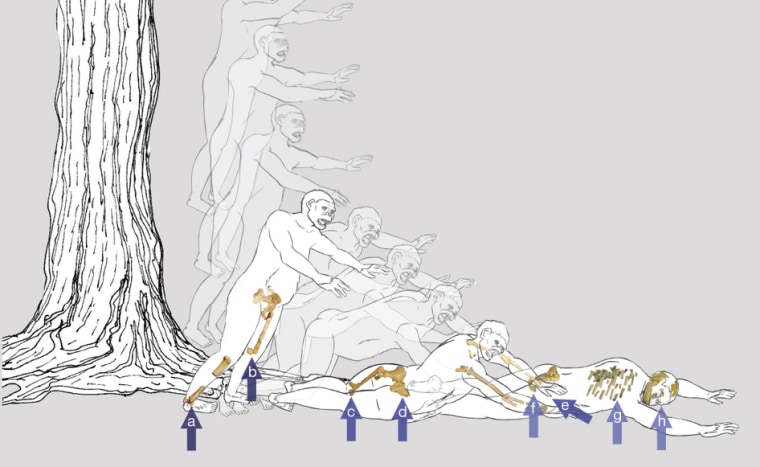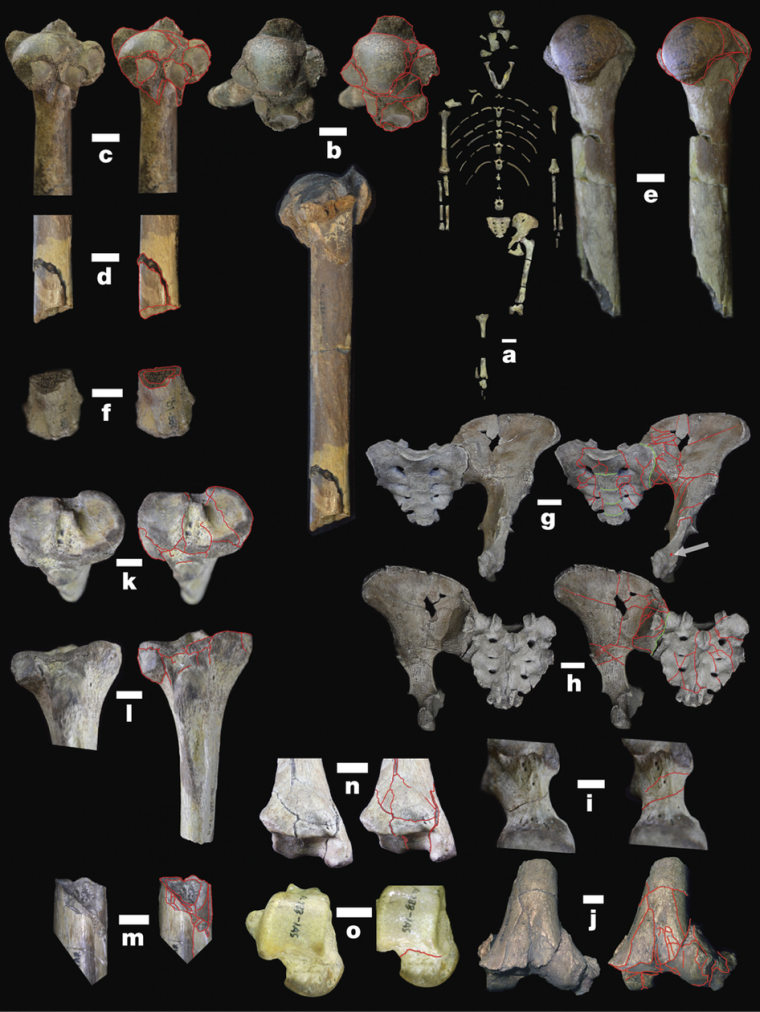"Lucy," perhaps the best-known pre-human whose tiny bones were found in Ethiopia, probably died after she fell out of a tree, scientists said Monday.
CT scans of the delicate, fossilized bones dug up from the hard earth in 1974 show fractures best explained by a hard fall from a tall tree, John Kappelman of the University of Texas at Austin and colleagues said.

Their findings, published in the journal Nature, are certain to lead to more debate, not less, about what happened to Lucy 3 million years ago.
“We had the idea that we could put together a complete story of how she lived,” said Richard Ketcham, who specializes in using imaging in geology and paleontology.
“Now we didn’t anticipate coming up with a complete story of how she died, as well, but that’s something that happened.”
Cracks in her armbones show Lucy was probably awake and trying to break her fall, the team said. Cracks in her legbones and a fractured skull show she landed hard, probably in a dry streambed.
She almost certainly died quickly.
Lucy has been assigned to the species Australopithecus afarensis. Her brain was slightly bigger than that of a modern-day chimpanzee, but her skeleton clearly shows she walked upright. Yet she also had features of a tree-climber.
Related: Lucy's Discoverer, 40 Years Later
She was just over 3.5 feet tall and her legs were made for walking, but she had strong arms that could have swung her up easily into trees. So scientists have long debated whether Lucy and her kind lived and foraged in trees, or spent their days on the ground.
“She’s one of the most completely represented skeletons, and as such she’s been able to tell us a lot about early humans,” Kappelman said.
The evidence from the CT scans suggests the fractures in Lucy’s bones happened when she was still alive and aren’t damage caused as the bones lay in the hardening dirt, Kappelman’s team says. They didn’t heal, and that suggests she died from the injuries.
"Lucy was conscious at the time of impact.”
And the fractures look like what happens when a human falls from a very tall place.
For instance, there’s one on an armbone called the humerus. “Under natural conditions, this fracture is commonly caused by an impact following a vertical deceleration event when an accident victim consciously stretches out their arm in an attempt to break their fall,” the team wrote.
“This fracture leaves a unique signature on the humeral head and is common in two distinct populations: elderly people who have suffered a reduction in bone strength when even a fall from standing height onto an outstretched arm can fracture and sometimes compress the head into the greatly weakened shaft; and people with healthy bone strength who experience a fall from considerable height that in turn produces an impact with more powerful forces acting on the outstretched arm."
She also had fractures to the forearms, lower limbs, pelvis, ribs and skull.
“The fact that these fractures commonly occur when an accident victim actively abducts and stretches out their arms in an attempt to break their fall suggests that Lucy was conscious at the time of impact,” the team wrote.
“It is therefore ironic that her death can be attributed to injuries resulting from a fall, probably out of a tall tree."
The area where Lucy was found is dry now, but 3 million years ago it was a grassy woodland, the team said.
“Given Lucy’s small size, she, like many small primates, probably sought nightly refuge in trees and possibly foraged there,” they wrote.
Related: What Other Pre-Humans Lived With Lucy?
Chimpanzees often climb 300 feet or higher. A fall from that height would definitely kill someone.
“Given the severity of the fractures, it is likely that the impact occurred on a hard surface, perhaps the dry bed of the channel itself,” they added.
“Although the fractures in Lucy’s humeri provide evidence that she was conscious when she stretched out her arms in an attempt to break her fall, the severity of the numerous compressive fractures and presumed organ damage suggest that death followed swiftly.”
The team noted that paleontologists argue vigorously about whether Australopithecines like Lucy and other pre-humans climbed trees regularly. “It is therefore ironic that her death can be attributed to injuries resulting from a fall, probably out of a tall tree, thus offering unusual evidence for the presence of arborealism in this species,’ they wrote.
The team that found Lucy named her after the popular Beatles' song "Lucy in the Sky With Diamonds,” which they listened to during their work in Ethiopia.

